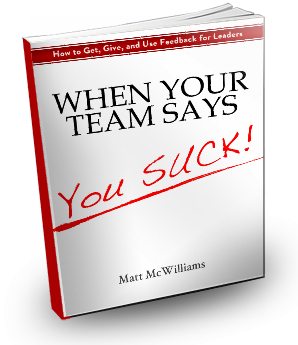2.9013. That’s the magic leadership number. I know it means nothing to you now, but it will soon.

The Losada Line is the magic leadership number. It’s named for its founder, Marcial Losada.
Losada spent more than a decade researching interactions between leaders and their team members. He spent time with high performing teams and low performing teams. He studied teams across numerous industries, through booming economies and depressions, with male and female leaders, and every conceivable variation you can think of.
But one thing was consistent:
Great leaders are positive.
And not just a little positive. On average, great leaders offer at least three times more positive comments than negative comments.
The exact tipping point, according to Losada’s research and mathematical modeling is 2.9013. That means that for every one negative comment, expression, or piece of feedback, great leaders offer at least 2.9013 positives.
What this means
What Losada’s research shows is that to overcome the damaging effects of just one negative comment or experience, people need three positive comments or experiences. That applies to your team members, your children, your spouse, your friends…it applies to everyone.
It’s dangerous when you find yourself below this tipping point for any length of time. His research shows that when the positive-negative scales are tipped for too long below 2.9013, performance suffers, both individually and as a team.

2.9013 positive interactions for every one negative is not the target though, nor is three or even four. As you might expect, great leaders, the best of the best, far exceeded the Losada Line.
The best leaders he studied provided their teams with six-plus positive comments or experiences for every one negative. That is when teams peaked.
What it does not mean
As a leader, at home, at work, or in the community, you want to aim for six positive interactions for every one negative. Your followers will perform best and your relationships will flourish.
However, there is a big caveat.
The Losada Line is not an excuse to let people off the hook and not hold them accountable. You cannot simply lower necessary negative feedback or let people off the hook when performance is suffering. Those are still necessary aspects of leadership.
Related Posts: Learn more about accountability here. Learn about how to use DISC profiles to communicate better.
And it is definitely not an excuse to artificially inflate your positives by using methods like the Feedback Sandwich. Simple inserting a positive in front of a negative and then finishing with another positive is not the right way to boost your positive numbers. It’s fake and dilutes the intended feedback. Remember the purpose of feedback can only be two things:
- Keep doing what you’re doing.
- Improve what you are doing.
Related Post: Why I Hate the Feedback Sandwich and What to do About It
How to use the Losada Line
Again, the Losada Line is not the target, but with this knowledge in mind, here’s how to use it.
Step 1: Measure your current performance.
Look back at your previous day or two and record all interactions over the next few days. What is your positive-negative ratio? If it’s below the Losada Line, you have some serious work to do. If it’s hovering around 3.0, let’s work on improving that, too.
Step 2: Analyze the data.
Are certain team members lower or higher than others? Why is that? Is there one team member dragging your average down? There is likely an obvious reason and you may need to set him or her free from the team.
Step 3: Set a target positive-negative ratio for each team member.
I suggest trying to improve by one additional positive per day over the next month. If you are currently at a 3.2 with Joe, shoot for a 4.2. That is both achievable and noticeable, which is what you want.
|
|
Remember it’s an average. You will have days when you fall below the target line, maybe even miserably so, and you will have days where you are in double digits. That’s OK. But do try to average it out at least every three days and do your best to limit the number of wild swings
Step 4: Continue to optimize and improve.
Each month, raise the bar little by little until you are in the 6-to-1 range.
Continue to monitor your numbers. Yes, this means you are going to perpetually be tracking your positive to negative interactions every day that you are a leader (which is forever if you have a family, friends, or anyone who reports to you at work). This is no different than daily tracking of profits and losses or your bank account. It’s just as important, if not more so as it directly affects your profits and income.
And remember: Give yourself grace
You are going to have bad days and good days. You are going to have weeks where you struggle to hit your target and weeks where it’s a breeze.
When you fall short, give yourself grace. One bad day or one bad week does not make you a bad leader. It does not ruin your team. It is quickly fixed by a better day and a better week.
Keep shooting for 6-to-1 and you’ll find yourself in the leadership elites.
What’s your guess on what your ratio is?
Questions?
Text me anytime at (260) 217-4619.
Or…check out some of my free reports to help you get on the right track:
 |
 |
 |
 |
 |
 |
 |
 |
 |





This works well in other areas of our lives as well (marriage, parenting, interactions at the grocery store)….
Totally! Any area involving relationships.
Great post Matt. We as leaders need to focus on catching people doing things right.
Working alone at home with my cat for companionship: “Good kitty, good kitty, good kitty, HEY, you left gopher guts on the front mat!”
HA! That is funny.
My dad used to say that when you do something wrong (in service), the wronged person will tell 16 people. When you do something right, they tell 1. So it takes 16 rights to make up for a wrong. Not sure if that is right or not, but the point sure got across.
Funniest comment I’ve seen here in a long time!
There are two words in my vocabulary that I try to use a lot and that is Thank You. It’s amazing the results that come from that. So simple, yet so incredibly hard for people to do. Great read Matt! I never knew the legwork behind that number. A minimum of a 3-1 ratio should be really easy for anyone to do.
Well said Camilla. It’s easy but you have to be intentional to say THANK YOU!